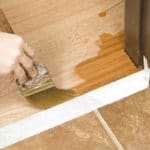Spray paint is a popular tool for artists, graffiti taggers, and anyone wanting to make something looks cool. Spray paint is used on walls and can be applied to metal surfaces like car bumpers or even wood furniture.
However, many types of spray paint available today vary in price and use. This blog post will discuss the different types of spray paint you can find at a hardware or art supply store so you know what type to buy next time you need some.
Contents
General-Purpose Spray Paint
General-purpose spray paint is a type of paint that’s mostly used for crafting and DIY projects. It’s also used as a primer so the surface to be painted is easier to clean up later, which makes it a popular choice for both professional and amateur painters.
This type of spray paint dries quickly, which means it’s good for quick jobs or craft projects. It’s usually sold in cans that are smaller than other types, but they’re also cheaper.
This type of spray paint has many uses and can be used on almost anything. It comes in a variety of colors, finishes, and coatings. For example, some brands offer matte finish while others have a high-gloss shine.
Some coatings are made with a mildew-resistant formula, while others have an anti-rust coating to prevent the paint from flaking off within months of application.
All-Surface Spray Paint
All-surface spray paint is one type of spray paint that can be used on various materials. It creates a lustrous color finish without dulling or scratching the surface, which makes it perfect for plaster, plasterboard, ceramic tiles, concrete, wood, metal, and other surfaces.
Other types of spray paint are not suitable to use on these surfaces. It should be noted that all-surface spray paint is not intended for use on walls, and it can take up to three days for the finish to dry.
All-surface spray paint comes in different colors and contains a glossy finish, making it easy to apply design or artwork on walls or other flat objects. The best part about all-surface spray paint is that it is durable, and projects will not chip or peel.
Rust-Prevention Spray Paint
One type of spray paint that is especially helpful for people who live in coastal regions or near saltwater is rust prevention spray paint. This type of spray paint can protect metal surfaces from corrosion caused by saltwater.
Rust-prevention spray paint is typically used for things like metal surfaces, such as car bumpers and fences, as well as items such as wood furniture. It’s important to use rust prevention spray paint because rust can weaken the surface and allow it to be easily damaged.
If you are looking for a rust-resistant surface for your bike, then this is the type of spray paint you should use. You will find that this spray paint also has an anti-corrosion agent to stop corrosion from occurring. This is a very important feature to have when you are looking for rust-resistant spray paint.
Rust-prevention spray paint creates a layer on top of these metals and other surfaces. It can also be applied on surfaces that aren’t metal but require protection from moisture and air like patches on clothing or leather boots.
Oil-Based Enamel Spray Paint
Oil-based enamel spray paint is a type of spray paint that contains an oil-based pigment and petroleum distillate, which means it dries the fastest of any other type of spray paint.
Oil-based enamel spray paint is a type of spray paint that is intended to be used on surfaces like walls, cars, and wood furniture. It contains solvents along with metallic pigments. The drawback to this type of paint is the fact that it cannot be removed without destroying the surface it was applied to.
The advantage of oil-based enamel spray paint is that it can be sprayed in any direction including vertical and horizontal angles, which allows artists more control over the application. Another benefit is that it dries much faster than many other types of paint, thus reducing shrinkage and cracking.
Water-Based Enamel Spray Paint
Water-based enamel spray paint is the most common type of paint used for wood furniture. This type of spray paint, when applied to unfinished wood furniture, will act as a waterproof sealant.
This is suitable for indoor use, but not outdoor use since it cannot handle exposure to rain. If you have a piece of wooden furniture that you would like to keep looking nice and glossy from day to day, this type of paint can do the trick.
Chalkboard Spray Paint
Chalkboard spray paint can create walls and rooms with a chalkboard effect. It provides a solution for people looking to create a chalkboard without purchasing and installing one. Spray paint is used on walls and can be applied to metal surfaces like car bumpers or even wood furniture.
Chalkboard spray paint is available in many colors and can be applied to different types of materials. The surface you want to apply the chalkboard spray paint to needs to be clean and dry otherwise, it may not adhere properly.
Spray Paint Tips
- If possible, choose high quality paint since it will last longer and look better after time compared to cheaper options. This will prevent rusting or chipping after time. This is especially true if you are painting something that will be in full view of the public, like a house exterior or an art piece for display.
- Clean the object you want to paint before starting. Make sure that it is free of dirt and debris because these items might affect your painting job in a negative way.
- Always test the spray paint on a small surface first before painting over your whole object. This is important to make sure that the paint will stick and hold up well after time.
- If you want your colors to be vibrant, use two or three thin coats of color instead of one big thick coat. Thick layers might look good at first, but they will not hold up as well over time.
- When spraying on furniture, spray it in an open space outside so the fumes don’t get to your nose and mouth. Also, remember not to inhale too much of these chemicals because they are not good for your health.
- Use a mask if you are spraying indoors. The fumes can be harmful to inhale, so ensure the room is well-ventilated before starting any spray painting project.
- You can create interesting patterns by using different colors of spray paint on top of each other.
- If you plan to use a certain color for an extended period, buy more than one can at a time. This will allow your art project to get done faster.
- If possible, do not let your spray paint dry for too long (at least 24 hours) before doing anything to it. This will help prevent any chipping or peeling later on because the paint has not yet fully dried (or cured) inside.
- If you’re working with a spray can, shake it up before spraying it every time because the paint might separate over time, and this could cause problems when applying your color coats.
- If you want a thicker shine, apply another layer of spray paint after the first one is dry. This might sound like it will take too long, but good quality paints should not require as many coats because they have higher coverage rates.
- Be careful when spraying your object so that none of the colors sprays onto other surfaces by accident.
Conclusion
Now that you know the different types of spray paint available, you can purchase what is most appropriate for your next project. You may have to buy more than one type if you are looking to cover a large surface area or use an assortment of colors.
The type of spray paint you buy should depend on what it will be used for. If you are looking to add a coat of color or make something stand out, consider using an enamel-based paint that is water-soluble and offers good coverage with less overspray.
On the other hand, if your goal is to create acid art as graffiti taggers do, choose a cheaper aerosol-based paint that produces drips and runs when sprayed onto surfaces. You can also use these different types of paints in combination to get creative with your artwork.




